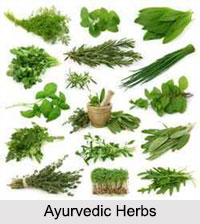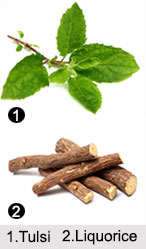 Ayurvedic Herbs are made out of roots, bark, fruits and plants, found in the deep dark woods of India where the herbs grow freely without pesticides and chemicals. These ayurvedic herb works with perfect harmony with the body and the mind. Ayurvedic medicine utilizes Ayurvedic herbs for the therapeutics like herbal tonics and herbal sweat baths. To deal with stress-related, metabolic, and chronic conditions these Ayurvedic herbs are administered often orally or even often inhaled depending on the need of the patient.
Ayurvedic Herbs are made out of roots, bark, fruits and plants, found in the deep dark woods of India where the herbs grow freely without pesticides and chemicals. These ayurvedic herb works with perfect harmony with the body and the mind. Ayurvedic medicine utilizes Ayurvedic herbs for the therapeutics like herbal tonics and herbal sweat baths. To deal with stress-related, metabolic, and chronic conditions these Ayurvedic herbs are administered often orally or even often inhaled depending on the need of the patient.Classifications of Ayurvedic Herbs
Ayurvedic herbs can be classified into five types; according to origin, habitat, various actions, action on doshas and their use.
Classifications of herbs according to origin are based on the theory of Panchabhuta. The classification of ayurvedic herb as per habitat and life span divides the herbs into four main categories like:
Ayurvedic herbs that are being classified according to the action on doshas are known as
Depending on their usage also Ayurveda classifies the Ayurvedic Herbs into two main categories like:
Ayurvedic herbs are further categorized according to their herbal properties and functions and each herb is used to treat each specific disease or behaviour. It is only by studying the symptoms coupled with the constitution of the patient, the ayurvedic practitioners determines the prevalence of each of the physical manifestations of the doshas and selects herbs to correct the physical imbalances.
Various Types of Ayurvedic Herbs
While some Ayurvedic herbs are administered individually some other herbs are also used as traditional formulas. Some of the Ayurvedic Herbs widely used are as follows;
 Amalaki: Amalaki is a common Ayurvedic herb mainly used to maintain and rebuild tissues. Rich in Vitamin C, it reduces pitta without aggravating vata or kapha and is one of the three herbs used in Triphala, the primary Ayurvedic tonic for maintaining health.
Amalaki: Amalaki is a common Ayurvedic herb mainly used to maintain and rebuild tissues. Rich in Vitamin C, it reduces pitta without aggravating vata or kapha and is one of the three herbs used in Triphala, the primary Ayurvedic tonic for maintaining health.Arjuna: Arjuna is traditionally given to support circulation and oxygenation of all tissues. It is also a famous cardiac tonic used in Ayurveda for a variety of heart conditions.
Ashoka: Ashoka is used in Ayurveda as a tonic for the uterus and is believed to maintain the proper function of the female generative system.
Ashwagandha: Ashwagandha has been traditionally used for general debility, sexual debility and nerve exhaustion.
For more visit the link below: